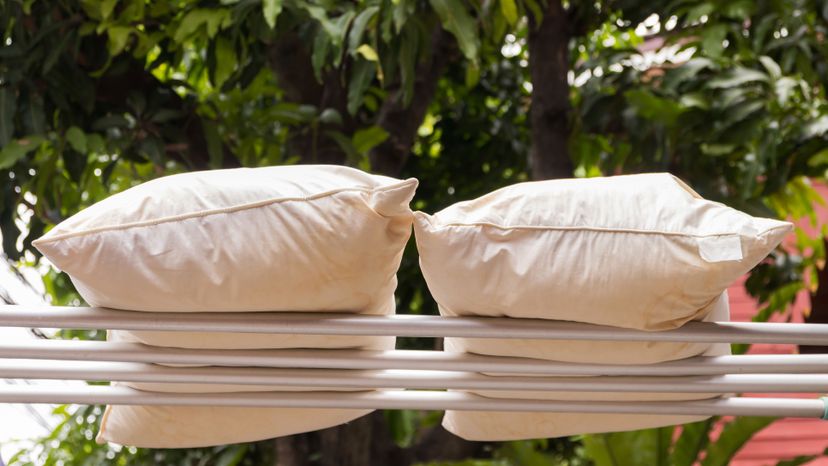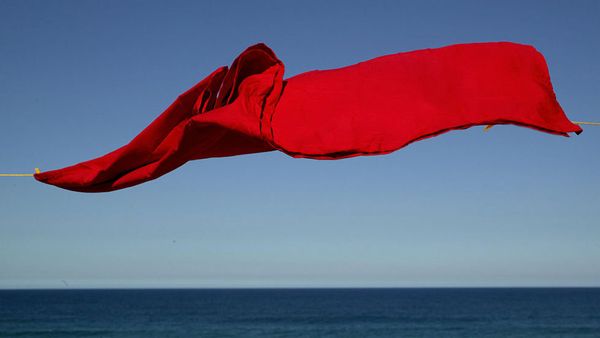If you use a zippered pillow protector, good on you! Martha Stewart says you'll only need to wash the pillows twice per year, although the protectors themselves require monthly laundering.
But there could be times when you need to launder your pillow more frequently. "If the user applies face lotions before going to bed or if the user has oily skin or scalp, washing more often may be needed to keep it fresh," emails Mary Zeitler, consumer scientist with Whirlpool Corporation's Institute of Home Science. Ditto that if you sleep with a pet or have recently had a cold or other contagious illness. Or if the pillow looks or smells musty (do you drool in your sleep?). Further, if you don't use a pillow protector, the Spruce says to wash the pillow monthly or every other month — which might be a stretch for most people.
So how do you clean your pillow? It's vital to check the care directions on the tag. "Most pillows are washable but it is important to know what type of filling is in your pillow," The Spruce's Leverette says. Adds Zeitler, "Most pillows are machine washable; however, there are some pillows like memory foam that are not."
In general, Zeitler recommends washing down feather and synthetic material pillows in the warmest water considered safe for the material, two per load. "This will help keep the washing machine balanced when spinning," she says. Use a mild liquid detergent, rather than residue-inducing powder and set your the machine on the gentle cycle. An extra rinse cycle is also a good idea to make sure all the soap is gone.
When it's time to dry, use a low-heat or air cycle setting for as long as is necessary to get all the moisture out of your pillows. Any dampness left behind will encourage mold growth. The experts at Clean My Space suggest getting two clean tennis balls and tying them up separately inside two socks. "The tennis balls will help beat out excess moisture while putting them in socks will prevent the smell and color of the tennis ball from transferring to your pillows," they write, adding, "It may take a few cycles to fully dry the pillows. Once dry, take a deep smell of the pillow to test if there's still moisture in the pillow."
Foam pillows are a completely different animal, so to speak. They can't get excessively wet (unless otherwise stated on the care tag), so rather than using a washing machine it's time to haul out the old vacuum. Then, toss them in the dryer on a "no heat" cycle to shake any additional dirt and grime loose. If any spots or other grime are visible, sparingly spot clean with water and mild soap.


